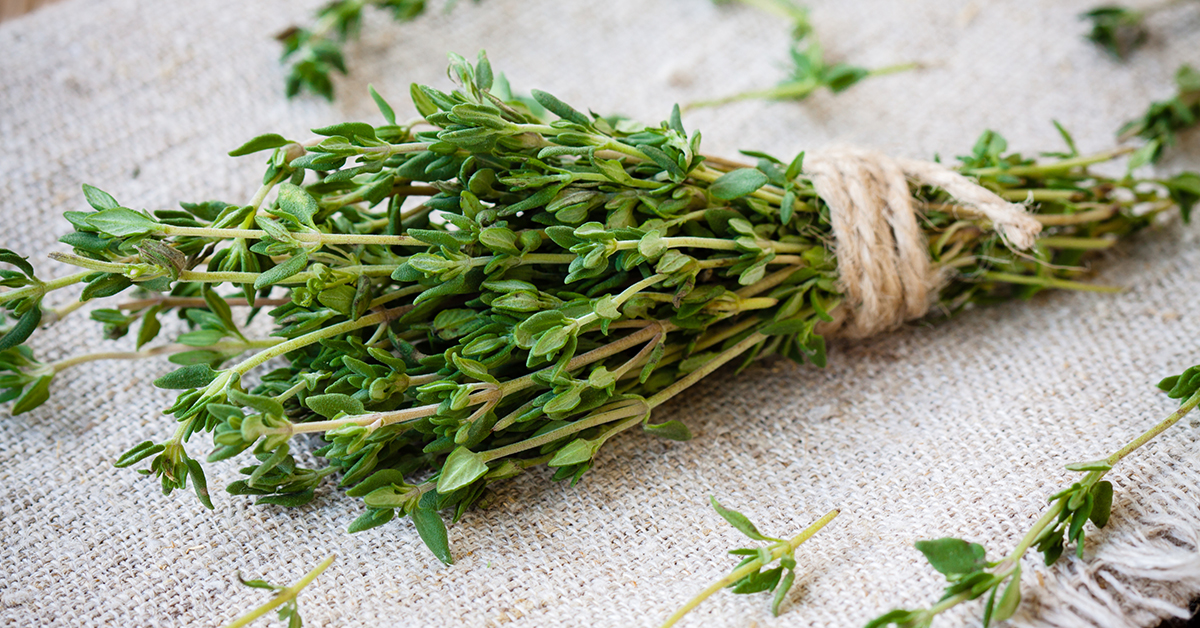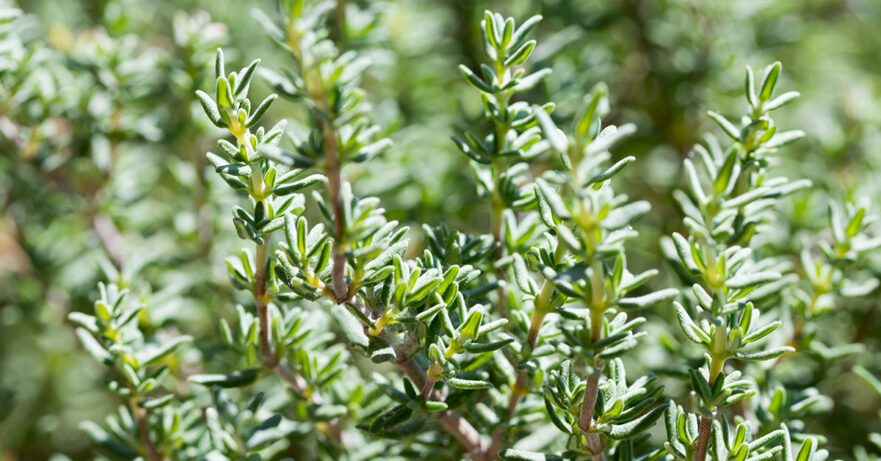In this monograph about thyme:
📖 Introduction | 🌱 Botanical Description | 📜 Traditional Uses | 🔍 Phytochemistry | ✨ Applications and Uses | 🛡️ Safety Profile
📖 Introduction
Thyme (Thymus vulgaris) is a perennial herb with a rich history in culinary, medicinal, and ornamental uses.
Known for its strong aromatic flavor, thyme has been valued since ancient times for its therapeutic properties, particularly its ability to help with respiratory and digestive issues.
| English Name | Thyme |
| Latin Name | Thymus vulgaris |
| Parts Used | Leaves, flowering top |
| Traditional Uses | Cough, bronchitis, antiseptic |
| Herbal Actions | Antiseptic, expectorant, antibacterial, antispasmodic |
🌱 Botanical Description
Scientific Classification
Thymus vulgaris belongs to the Lamiaceae, or mint, family.
Physical Characteristics
Thyme is characterized by its small, highly aromatic leaves and tiny purple or pink flowers. It has a woody stem and can grow as a low, spreading plant.
Natural Habitat and Cultivation Details
Native to the Mediterranean region, thyme thrives in well-drained soil and full sun. It is now cultivated worldwide in gardens and wild landscapes for its culinary and medicinal properties.
📜 Traditional Uses
Throughout history, thyme has been used for various medicinal purposes. Its primary traditional uses include treating coughs, sore throats, bronchitis, and digestive issues. Thyme was also appreciated for its antiseptic and preservative properties, making it a staple in traditional medicine chests.

🔍 Phytochemistry (Active Constituents)
Marshmallow root and leaves contain several key components contributing to their medicinal properties:
- Thymol: One of the primary volatile oil components known for its strong antiseptic, antibacterial, and antifungal action.
- Carvacrol: Another volatile oil with similar antiseptic and antimicrobial properties to thymol.
- Flavonoids: Compounds contributing to thyme’s antioxidant activity.
✨ Applications and Uses
Thyme is widely used in herbal medicine for its:
- Antimicrobial properties: Thyme oil, particularly thymol and carvacrol, is used to fight various pathogens.
- Respiratory relief: herbal thyme preparations are believed to ease bronchitis symptoms, coughs, and sore throats due to their expectorant and antibacterial properties, although more research is needed to establish these effects fully.
- Digestive aid: Thyme may help relieve digestive discomfort, such as gas and bloating, by soothing the digestive tract, but individual responses can vary.
- Skincare: Applied topically, thyme is believed to treat fungal infections and improve skin health, supported by its antifungal and antibacterial qualities. However, its effectiveness can depend on the concentration and method of application.
The efficacy of thyme in these applications is supported by its rich phytochemical content, especially the potent oils thymol and carvacrol, which provide significant antimicrobial and antiseptic benefits.
🛡️ Safety Profile
Thyme is generally considered safe for most individuals when used in culinary amounts and traditional herbal preparations.
However, thyme oil is potent and should be used cautiously, as excessive use can lead to irritation of mucous membranes. It is advisable to consult a healthcare provider before using thyme medicinally, especially for pregnant or breastfeeding women, young children, or individuals with serious health conditions, to ensure safe and appropriate use.
📃 Related Posts
🌱 Related Herbs

